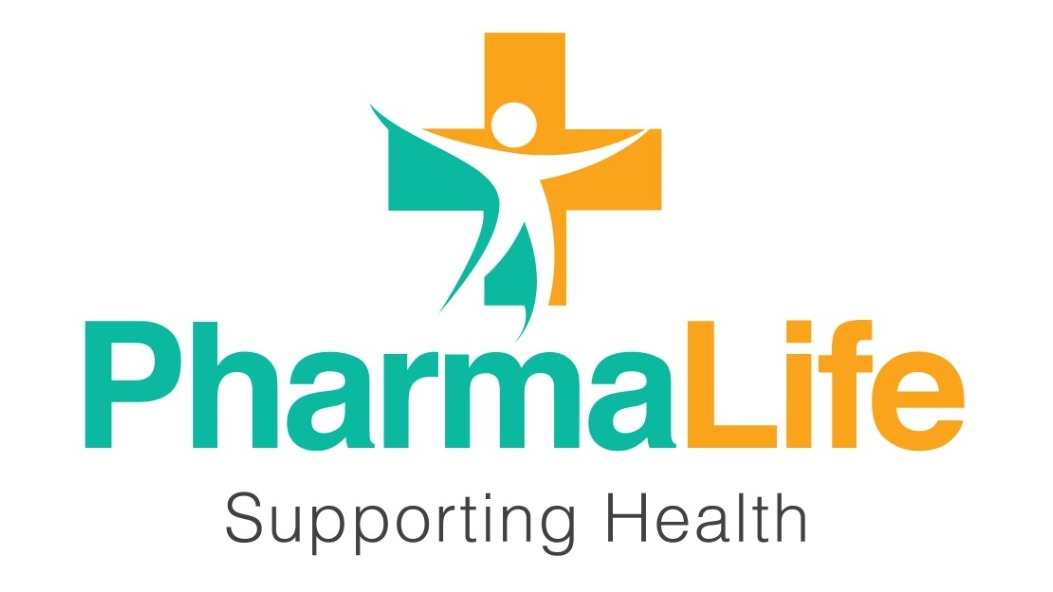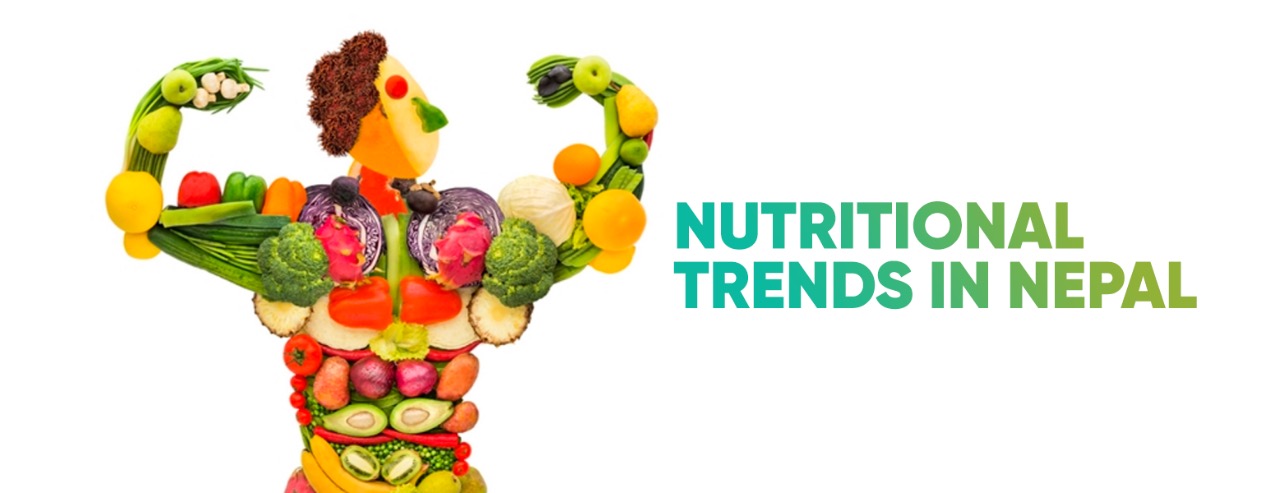Most of the population of our small Himalayan nation engage themselves in agriculture, and yet somehow our landlocked country still struggles in ensuring adequate supply of nutritious food and healthy diet. Currently ranking 144th out of 188 in UNDP Human Development Index, Nepal faces some serious challenges to build resilience and improve nutritional status, all the while developing healthy nutritional trend. In a country where the agricultural sector employs around 66 percent of the population, 1.4 million people are constantly in need of food assistance, with little to no knowledge of nutritional trend.
At PharmaLife, we always strive to help strengthen the health and wholesomeness of our readers. With a team committed to assisting our readers learn more about multiple dimensions of health, today, we analyze nutritional and diet trends in Nepal.
Nutritious Diet: What Does It Mean?
Nutritious diet, or a healthy diet, basically is one which provides our body all the nutrients to function properly, and stay safe from any illness. A healthy diet not only helps our body maintain vitality, but also helps prevent malnutrition in all its forms. Further, a healthy diet also prevents a range of communicable diseases. A diet plan packed with all necessary dietary elements improves ones cognitive development and healthy living,
Eating fruits, leafy vegetables, whole grains, protein-rich meal with low fat and sugar, all within daily calorie needs undoubtedly helps strengthen our body’s health and vitality. Including just the right amount of carbohydrate, protein, fat, vitamins and minerals surely makes the perfect healthy diet. However, our nation’s current nutritional trend still struggles to align with a healthy diet’s hallmarks. Although Nepal has made pretty impressive strides in enhancing nutritional status within the country, lack of knowledge and education is still very much palpable. Prevalence of stunting (chronic malnutrition) is currently around 36 percent in children below five years of age. Wasting (a form of acute malnutrition) too affects around 10 percent of children under five.
Poor knowledge regarding healthy nutritious diet is a matter of serious concern in our poverty-stricken country as forty one percent of women suffer from anemia. Moreover, 17 percent of women aged 15-49 years are underweight. Such figures raise a question regarding current dietary trends in Nepal. Nutritional and healthy diet is a fundamental right, and we all must work to achieve a better nutritional status within the nation.
Nutritional Trends in Nepal
Over the past couple of years, nutritional trends have been evolving with healthier and sustainable dietary plans including renewed attentiveness to health and vitality. People are gradually shifting from pre-packaged processed meals to their healthier and fresher counterparts. Although the rest of the world shares such paradigm shift towards fresh, organic and healthy dietary plan, Nepal has been a part of such trend since always. For our landlocked nation, importing food items has never been an option. Nepalese people have always been independent and involved in agriculture, thus producing most of their food on their own. Grains, fruits, vegetables, nuts, seed, meat and other healthy food items are all grown by a Nepalese family.
A typical Nepalese meal means Daal, Bhat, Tarkari, meaning Rice, legumes, and vegetables, all of which are obviously home-grown. Milk, meat, fish, fruits are also an integral part of Nepalese diet. A Nepalese family grows most part of their meal on their own, thus making the meal further healthy. Furthermore, this meal is packed with all forms of nutrients – carbohydrate, protein, vitamins, minerals and fat.
However, recently, Nepalese families are also shifting towards processed food elements with less health benefits, in the light of modernization. Packaged food items with added preservatives and supplements are a part of a modern Nepalese kitchen. On the other hand, there are conscious consumers too, with adequate knowledge of nutritious diet plan. Dietary trends, thus in Nepal, are dynamic.
PharmaLife is here to help you know more about such dietary trends, and their benefits.
Popular Diet Trends
Sound health and vitality ensures quality of life. With nutrition scientists, doctors, and other healthcare professionals advising people to adopt a healthier diet plan, nutritional trends are gaining rather immense attention. People, too, have been a lot more conscious towards their daily meal, and ultimately their health. Diet trends, thus have caught a lot of media attention recently. Many of these nutritional diets have been devised recently, while many of them have been around for centuries. We talked with healthcare professionals working in the field of Community Medicine and Nutrition in Nepal for over past decade to help our readers know more on some essential forms of healthy diets and their health benefits.
- Ketogenic Diet: A ketogenic diet (or sometimes Keto diet) is a very low carb diet where one drastically reduces carbohydrate intake while replacing it with fat. During such diet, the body learns burning fat for energy (called as ketosis). With low carbohydrate intake, blood sugars and insulin levels fall. It also reduces risks for cancer, heart diseases and more.
- Vegan or Plant-based Diet: Eating plenty of vegetables, fruits, whole grains, and healthy fats while eliminating various animal products has been proven a healthy alternative. Plant products provide enough carbohydrates, proteins, fat, and most importantly vitamins and minerals. Vegan diet lowers blood sugar level, improves kidney and liver function. Such diet also ensures weight loss while lowering risks of heart diseases.
- Mediterranean Diet: A Mediterranean diet basically involves eating healthy and limiting intake of unhealthy food items. Fruits, vegetables, legumes, whole grains, herbs, spices, fish, seafood should be eaten regularly. Eggs, cheese and yoghourt should be eaten moderately, while red meat should be eaten rarely. Sweetened products, refined grains, processed meat is completely avoided. A Mediterranean diet is considered one of the healthiest nutritional diets preventing heart issues, strokes, diabetes, all the while ensuring good health. ‘
- Low Carb Diet: A low carb diet is one where we limit carbohydrate intake, and eat more of protein, vitamins and minerals. Meat, fish, eggs, vegetables, fruit, nuts, seeds, high-fat dairy, fats are eaten while sugars, refined grains, trans fat etc. are restricted. Ketogenic diet is one of the classic examples of low carb diet. A low carb diet ensures proper body functioning, with lowered risks of cardiovascular issues. Kidney, Liver, Heart functions are improved with a proper low carb diet.
- Sugar-free Diet: Sugar has no essential nutrients and only contributes to calories. Further, a sugar enriched diet only has health hazards. So, a no-sugar diet cuts down sugar content in our meal. Soft drinks, confectionaries, sugary desserts, breakfast cereals etc. and other sugar enriched food is limited. Sugar free alternatives are preferred like oats, muesli and more. Such no sugar diet checks obesity, ensures heart health, maintains blood pressure and cholesterol, and prevents from dental plaques and cavities among many other health benefits.
- Intermittent Fasting Diet: It is considered rather a eating plan, than a diet plan. But since intermittent fasting has equal health benefits, it is gaining much popularity recently. This method typically involved 12 to 16-hours period of daily fasting. Such intermittent fasting on a daily basis helps fat burning and managing insulin level. Risks of chronic illnesses are drastically lowered by such pattern. Weight loss is also an added benefit.
Alongside such many different healthy diet plans and trends, there are many numerous plans too. Ayurvedic diet, low-cholesterol diet, Paleo diet are just a few among many other diets with various health benefits.
Healthier Future for Nepalese
According to nutritionists and public health experts, Nepalese diet could rather use some changes. Our typical diet comprises mostly of high carbohydrate and fat content, with relatively lesser portion of minerals, vitamins and protein. This on one hand results in vitamin and mineral deficiency issues including night blindness, pellagra, beri-beri, and many other diseases. Protein Energy Malnutrition (PEM) including Marasmus and Kwashiorkor are also therefore common throughout Nepal. On the other hand, high fat and carbohydrate content results in disorders like diabetes, hyperlipidemia, hypercholesterolemia and more. Prevalence of iron-deficiency anaemia, hypothyroidism, hypertension, and chronic gout are no less of issues in Nepal owing to our unhealthy diet plan.
Improving the nutritional status of the people and subsequently aid economic advancement of the nation certainly requires wide-spread intervention both from the government and public stakeholders. Lowering the carbohydrate, fat and cholesterol intake will surely help check many health issues currently prevalent in Nepal. Educating people to follow low carb, low cholesterol, and other healthy diet trends can prove instrumental in such intervention. Alongside, food supplements and dietary supplements can help bridge the gap between our micro-nutrient deficiencies, primarily vitamin and mineral deficiencies.
Food supplements basically denote natural food items that contain dietary ingredient so as to add nutritional value to our meal. Dietary supplements, on the contrary, are extractions from plants and animals that too add to our nutritional value. Dietary supplements usually come in the form of capsules or tablets.
A healthy and nutritious diet enhanced with all macro and micronutrients in the right amount will certainly help us strengthen our health and vitality. Adding calculated amounts of food or dietary supplements too will check any sort of malnutrition, either chronic or acute. Remodeling our current diet plans with healthy diet trends will ensure a healthier future for all of us, just like the future we envision here at PharmaLife.
References
Ministry of Health and Population (MoHP), New ERA, and ICF. 2017. Nepal Demographic and Health Survey 2016. Kathmandu, Nepal
Ministry of Health and Population (MoHP), 2017. Sustainable Development Goals (SDG) Targets. Kathmandu, Nepal
UNDP. 2016. “Human Development Report 2016”: http://hdr.undp.org/sites/default/files/2016_human_development_report.pdf
USAID. 2016 “Country Profile: Nepal”: Nepal Country Profile | U.S. Agency for International Development (usaid.gov)
WFP. 2017. “Nepal”: https://www1.wfp.org/countries/nepal
NCPS. 2017. “Nutrition Issues in Nepal”: https://npcs.org.np/nutrition-in-nepal/


There are no comments